The first tool I’ll be evaluating is the News Literacy Project’s RumorGuard. This is an interactive tool that fact-checks viral rumors spreading online. RumorGuard will feature a screenshot of the rumor that’s circulating, and it will fact-check the rumor’s claims based on five factors. These factors include source, evidence, context, authenticity, and reasoning. There are also techniques for each of the five factors in the form of quizzes, lessons, videos, and infographics that show the user how they can use these techniques themselves.
On their homepage, click on one of their fact-checked rumors or you can search by topic such as #TikTok to see fact-checks of rumors circulating on TikTok. One of the most recent fact-checked items on RumorGuard is a video clip where Donald Trump appears to refer to his wife, Melania, as ‘Mercedes.’ Three out of the five factors (source, evidence, and context) were used to prove that this claim is false. This video was taken out of context, as Trump was referring to Mercedes Schlapp, his former White House Director of Strategic Communication, not his wife.
This tool is effective in teaching participants about misinformation because it fact-checks viral rumors in a simple but thorough way. An article from Mashable describes how this tool is different from others because it engages future learning and goes beyond simply debunking a claim. It gives the user a choice to look at the details of how the content failed the five-factor test. This tool both fact-checks viral claims seen on social media and provides users with the tools they need to conduct fact-checks of information they see on social media.
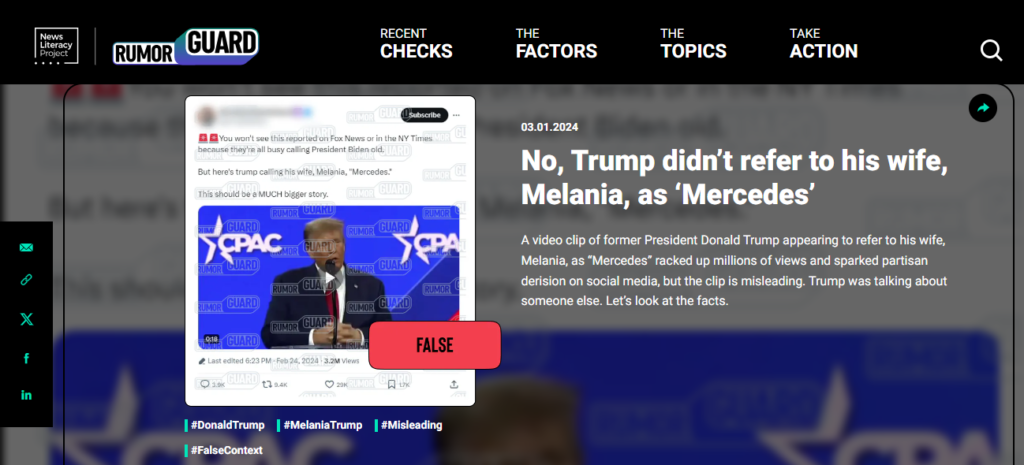
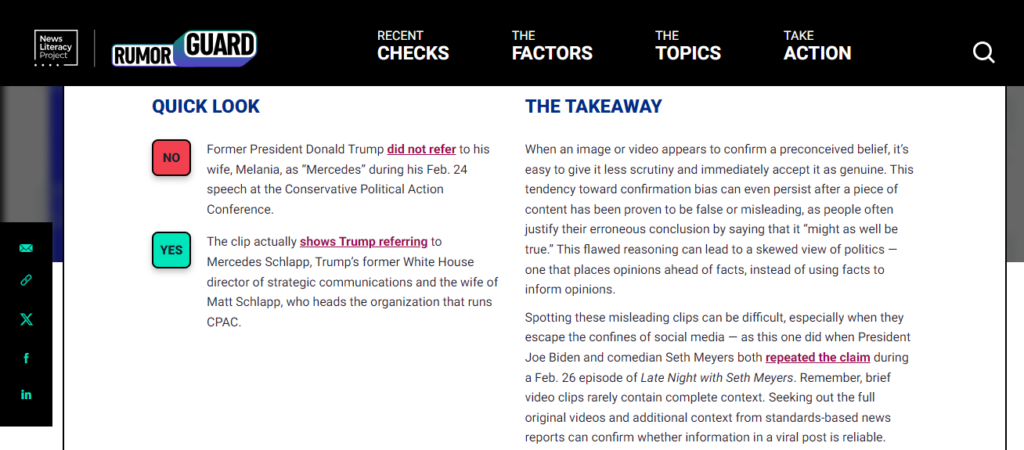
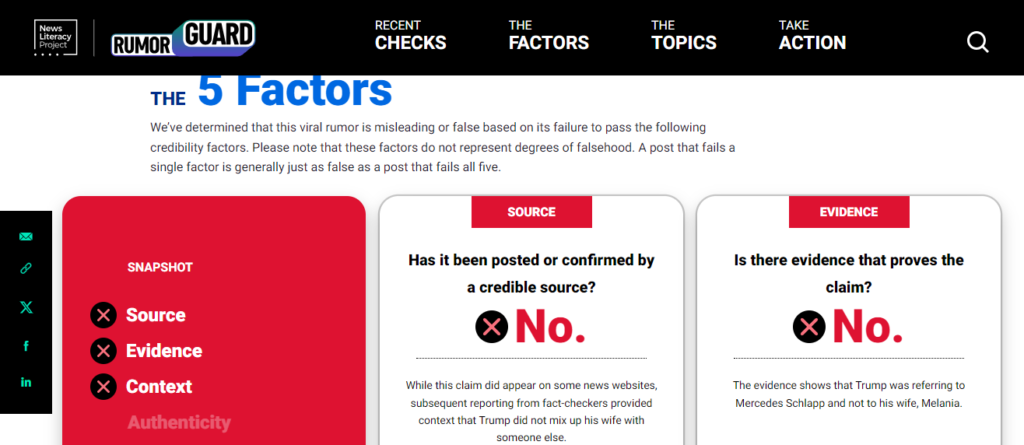
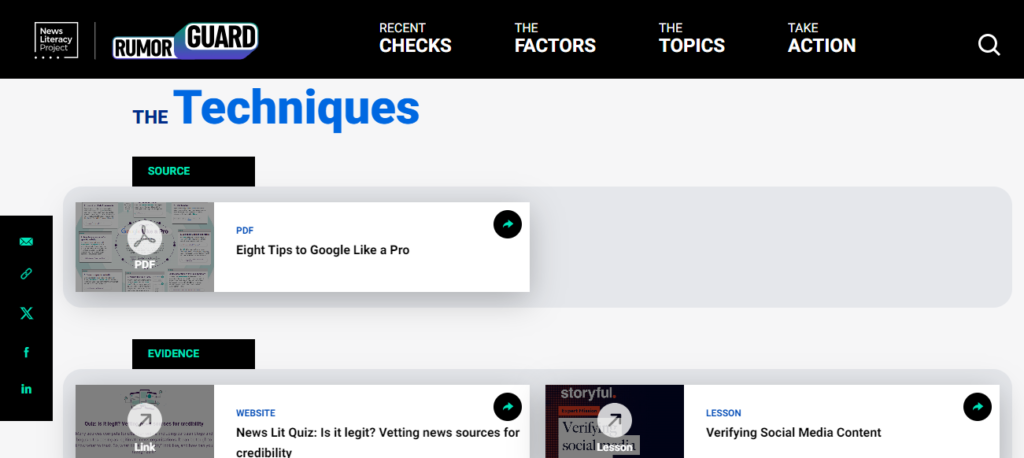
The second tool I’ll be evaluating is a game called Bad News. In this game, the user is the fake news mogul. You begin with a small social media following that you build up by posting fake news content in the form of tweets, memes, etc. In this game, you’re the bad guy and you’re learning their tricks for how they spread fake news.
But you must maintain a balance between keeping your followers entertained, and earning more followers, but at the same time not posting things that are so outlandish that you lose credibility with your followers. Badges are earned for mastering each of the fake news techniques including impersonation, emotion, polarization, conspiracy, discredit, and trolling.
The game uses the ‘Inoculation Theory,’ a psychological theory where you’re persuading others to not be persuaded by others. An article from Science Alert compares this to a vaccine where “exposing people to a weak argument can help them develop a defense system, whereby stronger arguments are not so contagious or harmful in the future.” The goal of the game is to immunize users against misinformation tactics by exposing them to a weakened dose of it.
In a research essay from Misinformation Review, the game designers found that after playing the game, people became less susceptible to commonly used misinformation techniques, referred to as prebunking. The same study also found that “social impact games rooted in insights from social psychology can boost psychological immunity against online misinformation across a variety of cultural, linguistic, and political settings.”
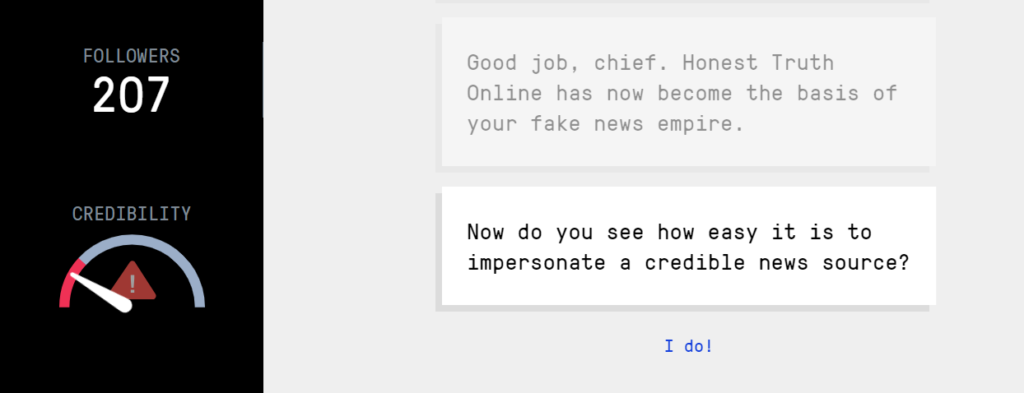

Interactive tools and games are a great way to teach people about misinformation and to eradicate it. Rather than reading an article about misinformation techniques and fake news, people can play a game or use an interactive tool. This is often more engaging and encourages motivation.
An article from Class Craft describes how using games for education in general can provide educational styles that fit different types of learners, teach collaboration, critical thinking, and problem-solving, and reinforce social-emotional learning.